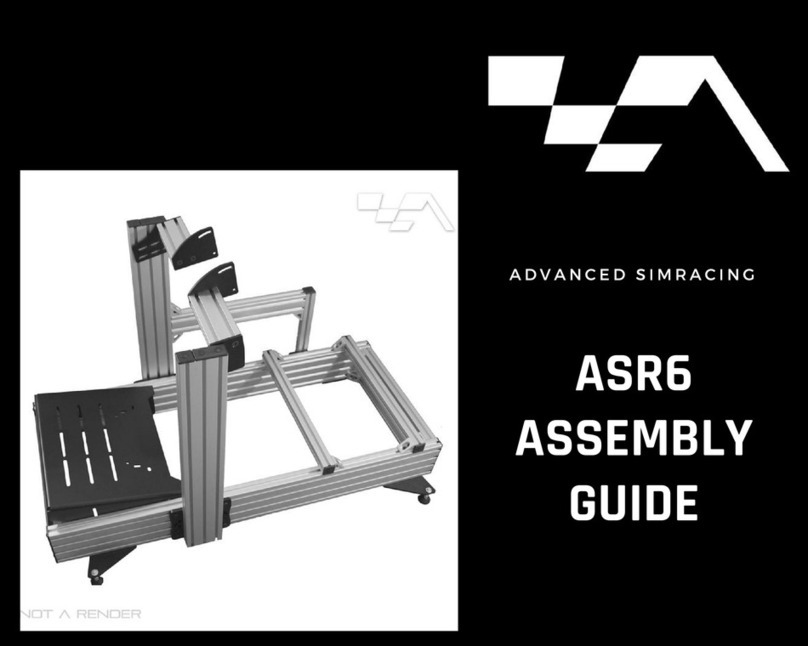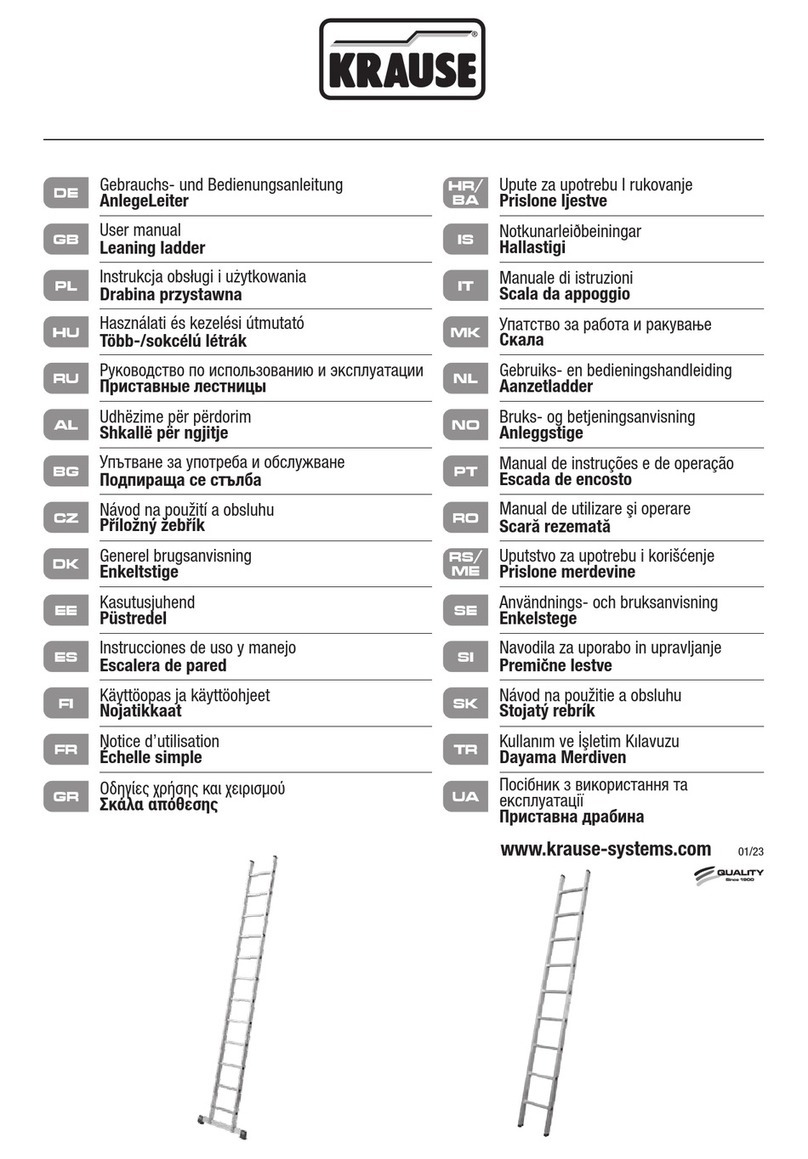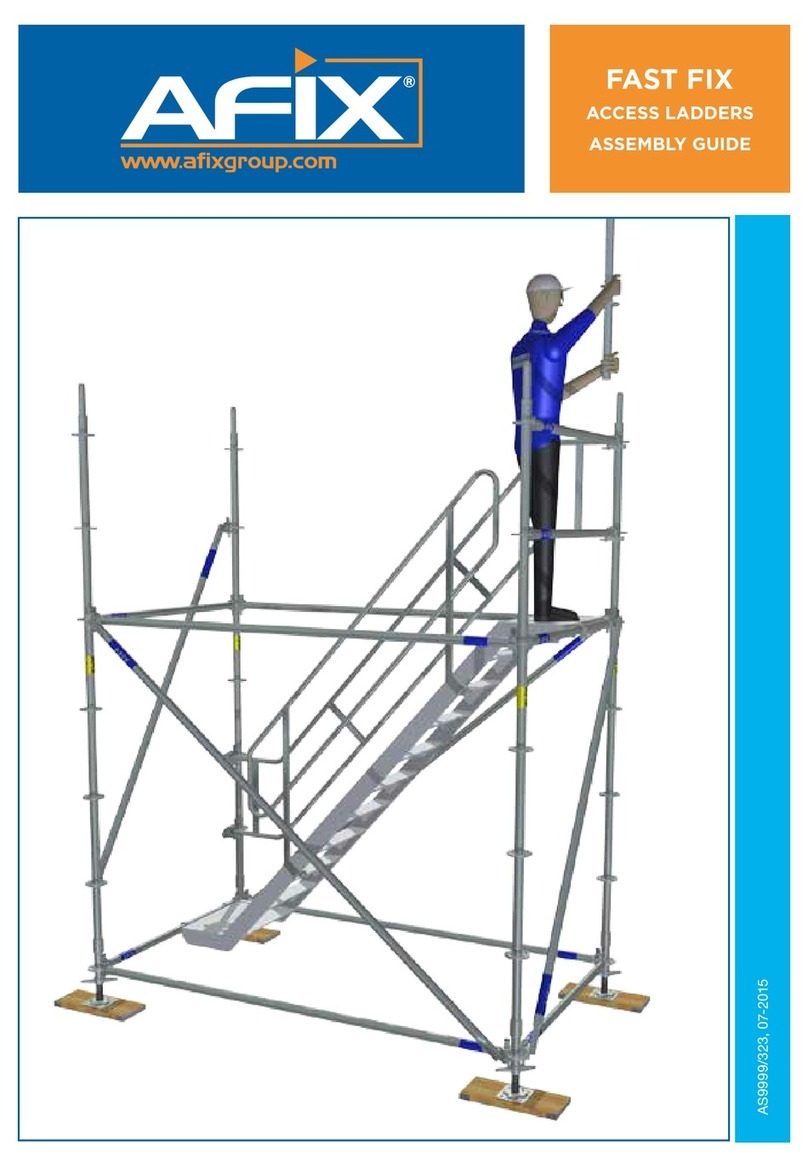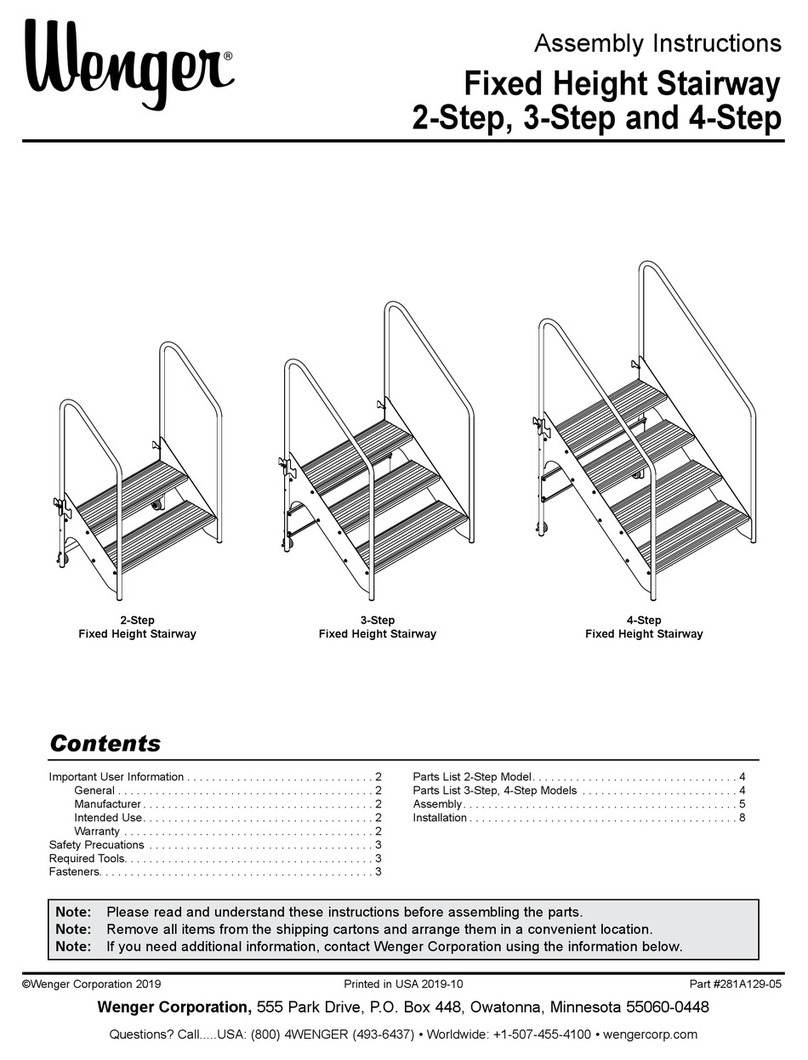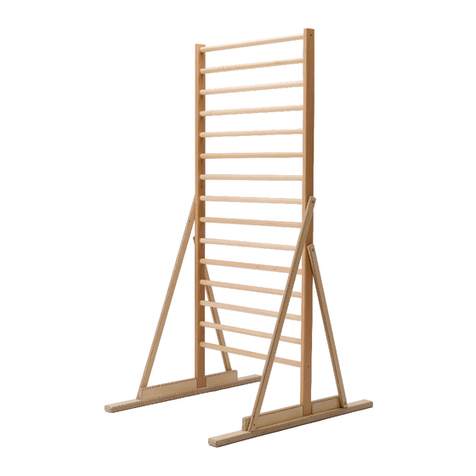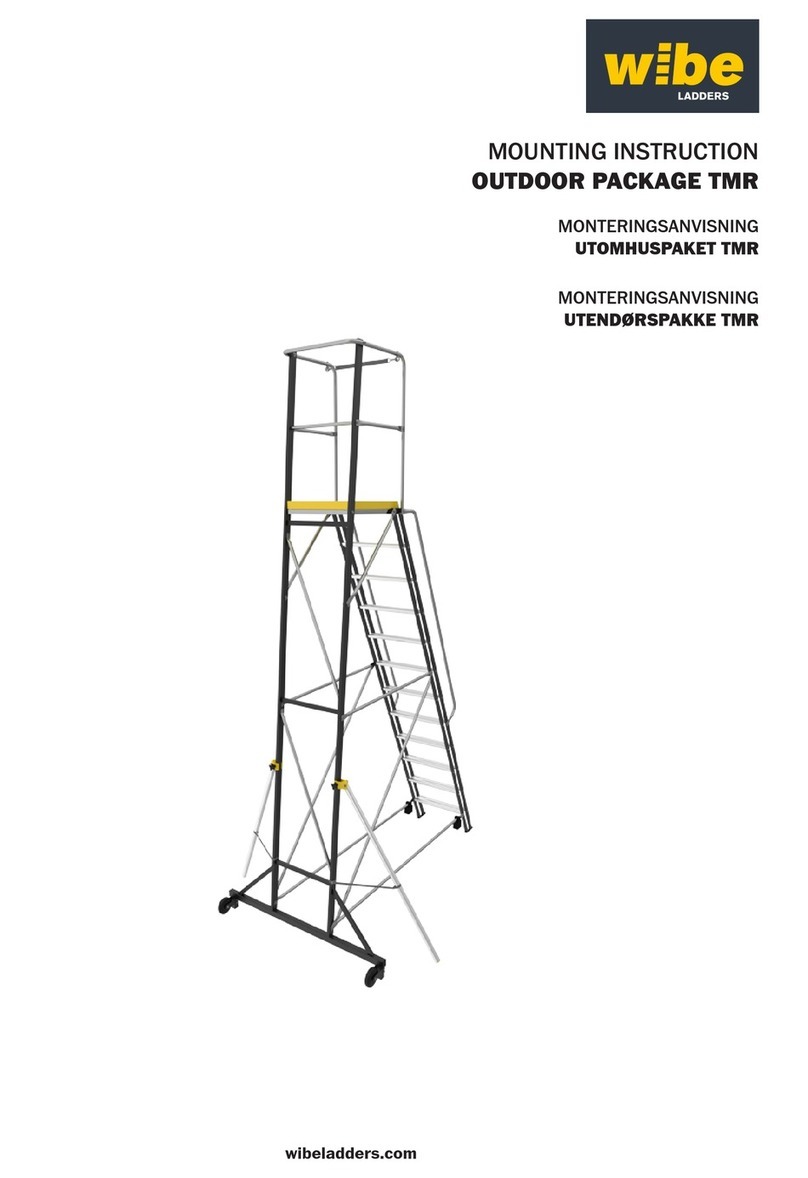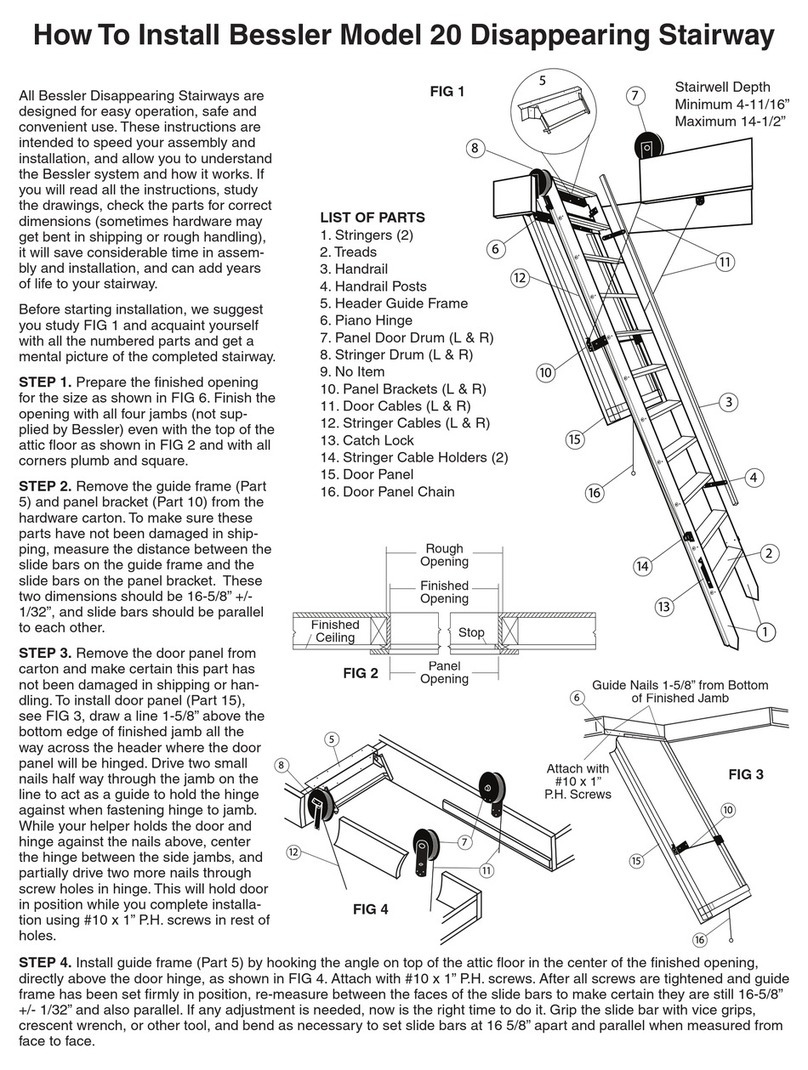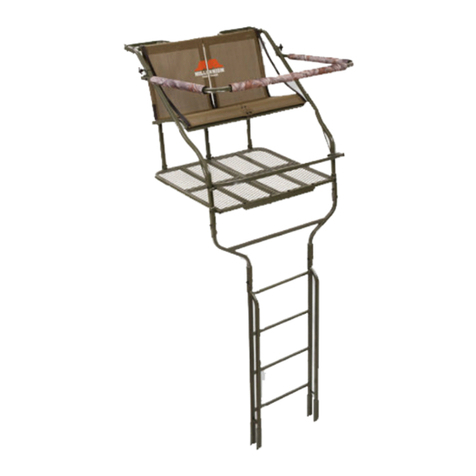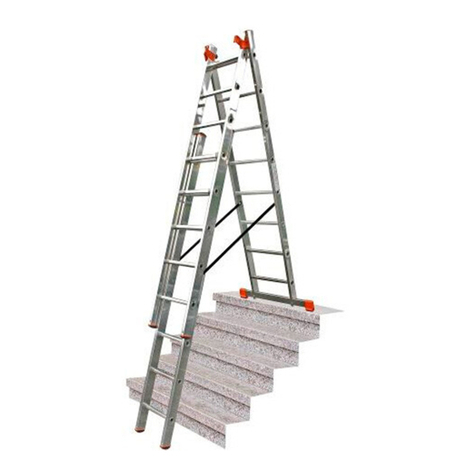Custers Hydraulica B.V. Venray NL
7-jan-
21 www.custers.nl
5
5. Safety instructions
5.1. Check before assembly
Check whether the people in charge of assembling the tower are sufficiently qualified and
check whether the place where the scaffolding is to be erected, is safe and suitable.
Attention:
- The ground/base must be sufficiently load-bearing and flat;
- The area must be free of obstacles both on the ground and around it;
- Check whether the wind conditions are such that the scaffold can be used;
- Check whether all parts and any ropes used for hoisting work are available at
the workplace;
- Damaged, incorrect or non-original parts may never be used.
5.2. Personal protection and aids
- Always wear work gloves, work boots and a safety helmet.
- Sturdy rope for manual lifting of parts or tools.
- Attaching fall arrest equipment to the scaffolding is not allowed. (In case it is
necessary to use any kind of fall arrest equipment, use the existing facade or other
solid building structure.)
5.3. Assembly
Erecting the mobile scaffold tower is described in the assembly instructions. The amigo
scaffolding can be assembled by one person.
The mobile scaffold tower must not be out of the plumb in excess of 1% (a maximum of 1
cm inclination over a length of 1 metre); check this with a spirit level; correction is possible
by turning the spindle nuts of the wheel spindles. The wheels must always be on the brake,
except when relocating. Make sure that the castors are secured, either by tightening the
wing nut or by clicking the locking lever on the protruding edge of the reinforcement ring.
The platforms must be secured by sliding the anti-lift rachet under the rung. The frames
must be secured against each other using locking pins.
The second brace frame from below is fitted to the uprights, in such a way that the openings
of the claws point outwards. The other narrow frames are mounted on the rung.
At the working level, there must always be at least one platform with a hatch; the working
level must be equipped with: handrail, knee railing and toeboards all around. There must
also be at least one on the resting level. The resting level must be equipped with handrails
and knee railings all around and must be installed every two metres.
A resting level is converted into a working level by placing all-round toeboards.

